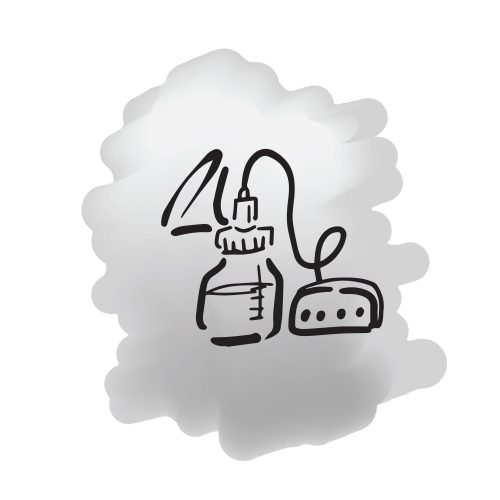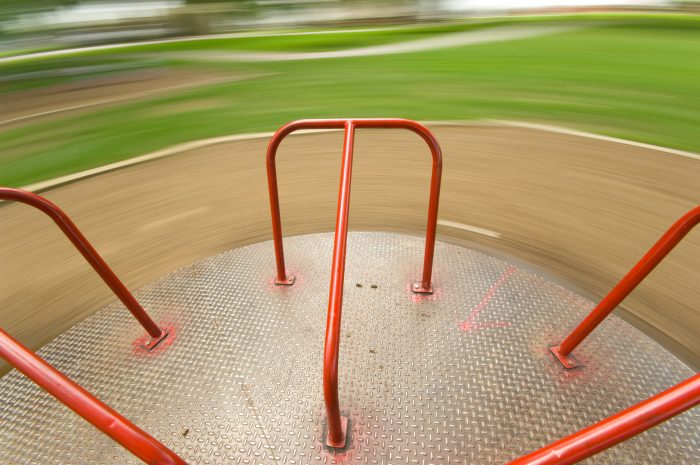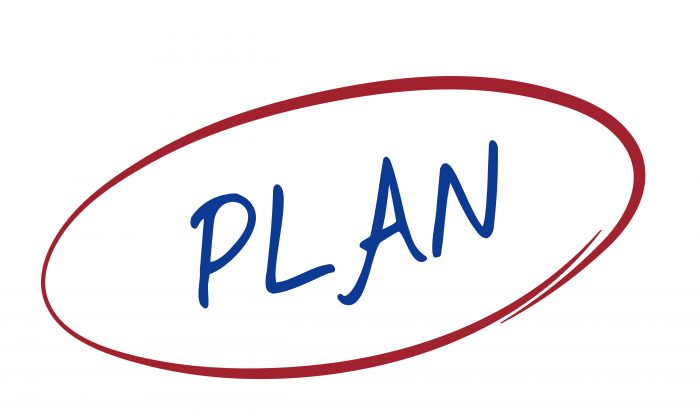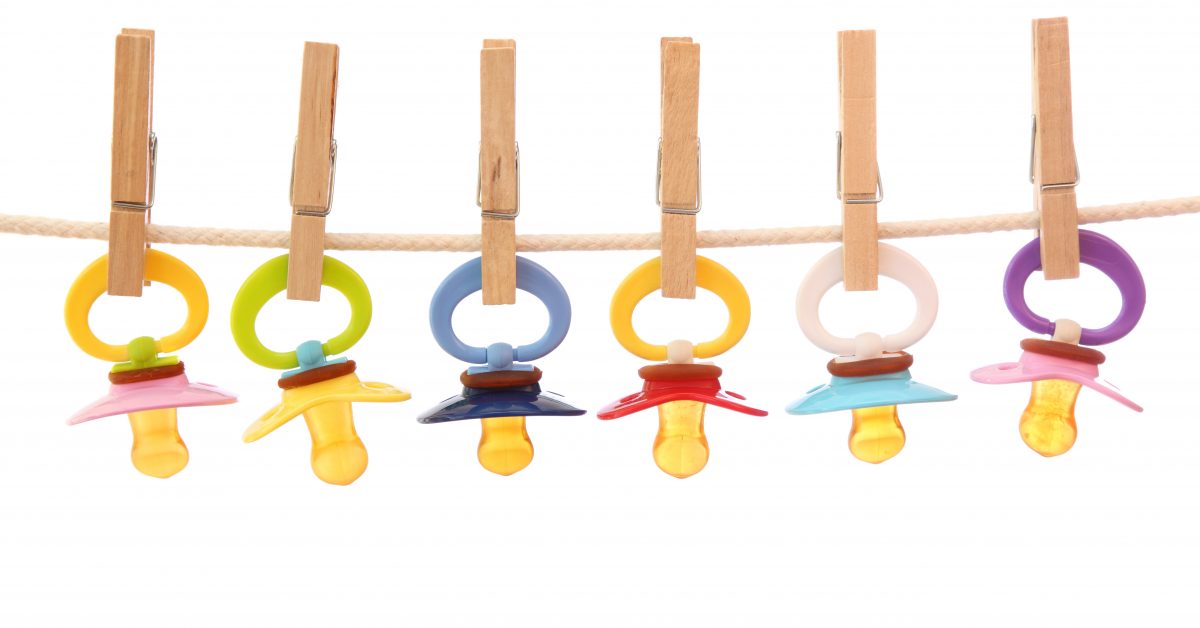Breast pumps can be tricky.
Many mothers either struggle to get enough, or they are able to get the milk, but it takes forever! Don’t worry – I’m here to help!
You see, many mothers can be disappointed when only small amounts of milk are expressed. And immediately question their milk supply.
They call me in tears, saying “if this is what the pump is getting – my baby is certainly not getting enough!”
This is a totally normal reaction, don’t worry! But it is also not entirely true, let me explain. Your baby’s sucking powers will beat any electric pump every day of the week!
So even if you’re struggling to express with your pump – it doesn’t mean your baby is not getting enough. And it doesn’t mean there’s anything wrong with your supply, either!
Your baby has two distinctive advantages working for them.
First, the close skin to skin contact during breastfeeding makes your body release a hormone called oxytocin. And guess what oxytocin does? It helps to squeeze your milk out of the cells in your breasts. Brilliant!
The second advantage your baby has over pumps, is what I call “the double action”. When a baby sucks, they use two actions to remove milk. They compress the breast and they suck. (A pump, on the other hand, only sucks.)
So remember these two advantages. Because here’s what this means:
Even if you’re struggling with your pump right now, don’t worry! I’II show you what to do to get more milk while pumping!
All you have to do is follow the steps below, and you’ll start getting much more from every pumping session.
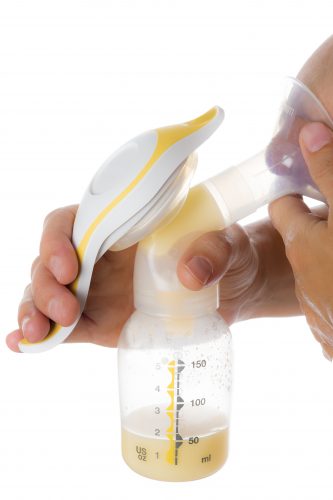
Step #1: Critical Preparation – Breast Massage
Your pump doesn’t have the two advantages your baby has (double-action sucking power and hormones working in their favour). Therefore, you need to help your pump do its work.
And the first step is breast massage.
If your breast is tight, the milk can be a little stuck. This makes expressing hard work for your pump. The solution? Breast massage.
Breast massage helps loosen your breast tissue. This allows for the pump to suck the milk out with much more ease. (This step alone can drastically increase the amount of milk you’re able to express!)
Here’s what you do:
- Start by cupping your breast in one hand, so the entire weight of your breast is in your hand.
- Then use the pads of your middle three fingers to rub in a circular motion around the entire breast so the breast shakes. (Shaking is the result you are looking for.)
- You can use a little massage oil or cream to help your fingers move over your breast.
Do this for about a minute or two.
Just be gentle and don’t hurt yourself. And don’t worry – you can’t do this wrong!
Now your breast is a little softer, it’s time for the next step.
Step #2: Hand Expressing (But With A Twist)
Remember I said that your baby breastfeeds with two actions; compressing and sucking?
Well, you are going to do some compressing to help bring your milk towards your nipple. This is very similar to hand expressing, but with one small trick!
Here’s what you do or check out my video:
- After you massage your breasts (step 1), the next thing to do is locate your areola. (The areola is the dark area surrounding your nipple.)
- Next, place your thumb and forefinger about 2 cm away from your nipple. (Every woman has a different size areola, so this may be on the edge of your areola, further out, or within the areola. It doesn’t matter – as long as you find a comfortable place.)
- Now, before you squeeze your fingers together, you need to do this one little TRICK: Push your fingers back into your breast tissue (pushing towards your back). Do this firmly, but without causing any pain.
- What this does, is compress your breast tissue. This allows milk to escape from the cells its stored in, and into the tubes that lead to the holes in your nipple.
- After you have pushed back, you need to squeeze forward and bring your fingers together until they rest behind your nipple.
- So the action is push back, then squeeze forward. Repeat until you can see a few drops coming out.
- Do this quickly, but shallow at first. Then, squeeze firmer after about 15 seconds. You warm up with the shallow squeezes, and this warmup will then allow you to go a little deeper without experiencing any pain. The deep squeezes will produce the milk.
Tips:
- If you don’t get anything, don’t worry. It may take you a few minutes to get this going.
- If after five minutes nothing is happening, go back to step 1 (breast massage).
- If you can see a few drops – this is all you need!
These two steps – massaging the breast and hand expressing, perfectly imitate your baby’s natural advantages. By doing these two steps – you will be able to get far more effective milk removal from your pump!
So now, let the pump take over!
Step #3: Pumping
It doesn’t matter whether you have an electric pump or manual pump. The mechanics are the same. Not sure which pump to buy, check out my blog on Choosing The Right Breast Pump.
Just place the cup on your breast and check if the nipple is right in the middle. (If it is off centre your nipple may rub on the inside and this can hurt.)
Sometimes its hard to get a good look from where you are. So at the beginning, you can ask your partner to check for you. (Soon this will become second nature to you and you won’t need any help.)
Once you’ve got everything positioned… All that’s left is to start the pump!
How long should you pump for?
Great question! Pump for about 10-12 minutes each side if you are using a single pump. If you are using a double pump you can pump for approximately 15 minutes all up, this is pumping both breast together. (If you’re not sure which pump to get, double or single, click to read my blog on Choosing The Right Breast Pump.)
Basically if you do both together you will cut down your pumping time. But it doesn’t matter if you use single or double you will get the same result. See what works for you best. You may want a free hand to read more blogs!
Pumping for longer than 10-12 mins each breast or more than 25 minutes in total is enough. Pumping for long sessions can cause pain and is not good for your breasts. (Don’t worry if you have been pumping for longer, just try the steps above and you’ll be able to quickly cut down your time on the pump.)
Step #4: When You’re Not Getting Enough Milk
If you’re still struggling to get to your pumping goals, I have an ace up my sleeve. This is a great trick… and it’s so EASY!
For this trick to work, you will need to be pumping one breast at a time.
While you’re pumping, hold the pump cup in place with one hand. Then place your other hand on the top of that breast, palm down. Keep your hand away from the pump.
Now… (are you ready…?)
Squeeze your breast by bringing your fingers in towards your palm! And HOLD the squeeze for about 30 seconds.
Have a look at my quick video to get a visual of how it’s done!
Why does this trick work so well?
Squeezing the breast puts pressure on the cells and tubes that hold your milk. Just like squeezing a piping bag filled with icing. You are squeezing this towards the opening.
This is not at all difficult! You may even see milk squirt from your nipple into the pump cup!
And when you hold the squeeze, you’re pushing the milk through the tubes towards the nipple.
But if you squeeze and let go too quickly, you won’t get the full effect. Because the milk will retreat back from the tubes and into the cells.
Therefore, the HOLD is the most important part! (Hold and release and repeat. Only hold for a minute then let go and repeat).
What About Double Pumping?
You may be wondering how to make this trick work if you’re double pumping. And the answer is – you can’t. Because when you are double pumping, both of your hands are busy.
So what do you do? Simple. Follow steps 1-3 (breast massage, hand expressing + compression, then regular pumping.) Double pump for ten minutes. Then stop. And finish off with pumping one breast at a time with the SQUEEZING trick!
How Much Milk Should You Get?
The exact amount you should aim for will vary based on the reason why you are pumping. (Is it for top ups?… Full feeding sessions?… Solving a problem like low milk supply or slow weight gain?)
That’s why I wrote a full guide for you on this subject. You’ll find it right here in these blogs: put links in
- How to Cut Down Formula
- Low Milk Supply How to Recognise and Treat
- Baby Not Gaining Enough Weight? Start Here
What Pump Should You Get?
Now that you have the 4 steps to pumping success, you can use them every time you pump. However, you may wonder which is the best pump for you?
There are vastly different pumps on the market. Some are electric. Some are hand pumps. The motors are all different. The sucking patterns are all different.
So which one is best?
Read my guide to Buying The Right Pump to find out.
Good luck, and please let me know if you need further assistance! (Leave a comment below, or text me at 0414 403 208 if you’d like to get started on a personalised plan!
Quick note: These tips apply to you no matter what the reason is you are breast pumping. Whether it’s to solve a problem (like breast engorgement, damaged nipples, etc.) or to make feeding easier for you and your partner.
That being said, if you are pumping to resolve a problem, I recommend supplementing this information with instructions specific to your problem. Please contact me for more information or Give me a call (or text me) at 0414 403 208, and I’ll help you figure it all out! 🙂
